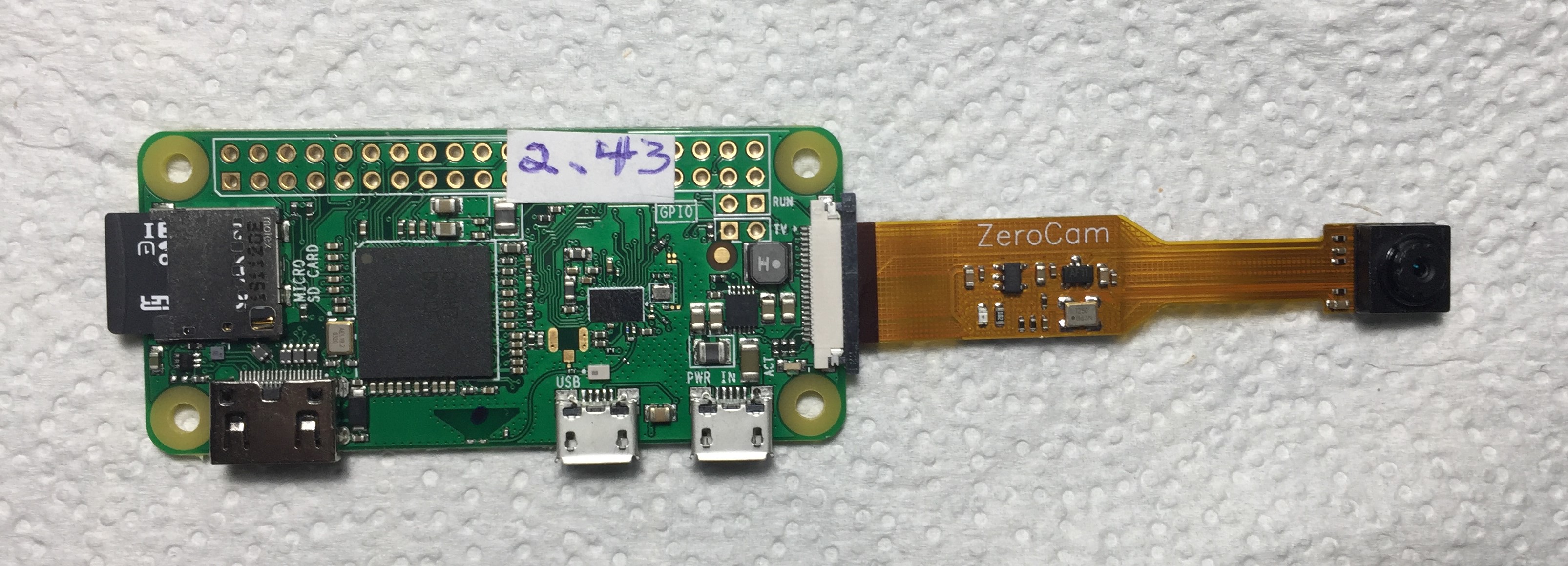
"Raspberry Pi Zero W" Cab Cam Car
(Under Development)
The "Raspberry Pi Zero W" Cab Cam Car is essentially a Wifi based IP camera on N scale train wheels. An IP camera can communicate a continuing digital video stream, in this case H264 digital video, to a receiving system like You Tube for example. A receiver might also be your lowly browser that can connect to my house and layout and particular train that originates the digital video stream. So when attached to one of my trains you can see the track and surroundings in front of the train that you are driving.
The next three sections provide information on the Software, Hardware, and Compromise for this system on an N scale layout
Raspbian OS
Raspivid App
ffmpeg app
mjpg_streamer app
Apache Web Server
This Raspberry Pi (RPi) computer has five primary connectors: Camera port, Micro SD card port, Power (not USB) socket, USB socket and Mni HDMI socket. After the software is completed we only use the Camera and Micro SD ports. Power is supplied by a special purpose battery which connects directly to RPi circuit board attachment points.For development we use the on-board WiFi to connect via 'Putty' SSH software on Windows 10 (or other computer) as well as an HDMI monitor via the mini HDMI socket and a mouse and keyboard via the USB socket.
This is a Pi Sugar battery. It in enclosed in a metal jacket and held to its 'hat'circuit board by magnet.
This is a MicroTrains heavy duty depressed flat car with two 3/4" square magnets to hold the RPi and Battery configuration in place.
This is the combined configuration before final mounting is completed.
The RPI Cab CAM Car on my railroad.
The RPi is very big but not too big with some major layout rework of some signals and tunnel portals and some buildings, trees, bushes, etceteras too close to the tracks. Also 'caged' bridges are probably too narrow to let the cab car pass. The car overhang is 3/16" on each side so it violates the NMRA standard gauge specification. Oh Well! Until the next generation of hardware becomes available!
The subsystem is heavy but six axles are better than four and metal wheel-axles are better than plastic.
Performance in terms of adequate latency has been a tough nut to crack.I was pleased when I could upload continuous video to my You Tube account but getting latenncy below 15 seconds was a showstopper for real time train operators to use.
After much study and testing and in house Wifi and Ethernet improvements, I am able to achieve sub-second latency using an on board web server and MJPG streaming methods and that is my current status.